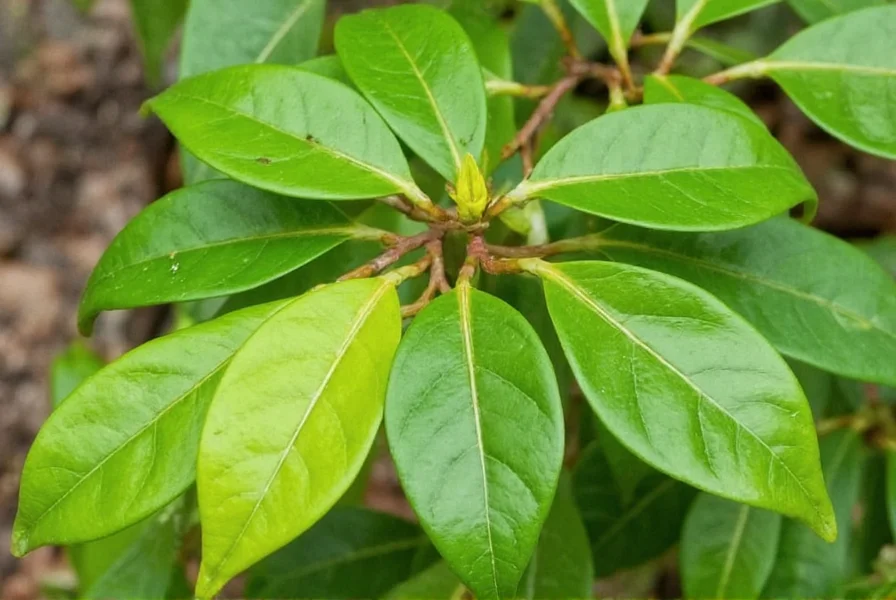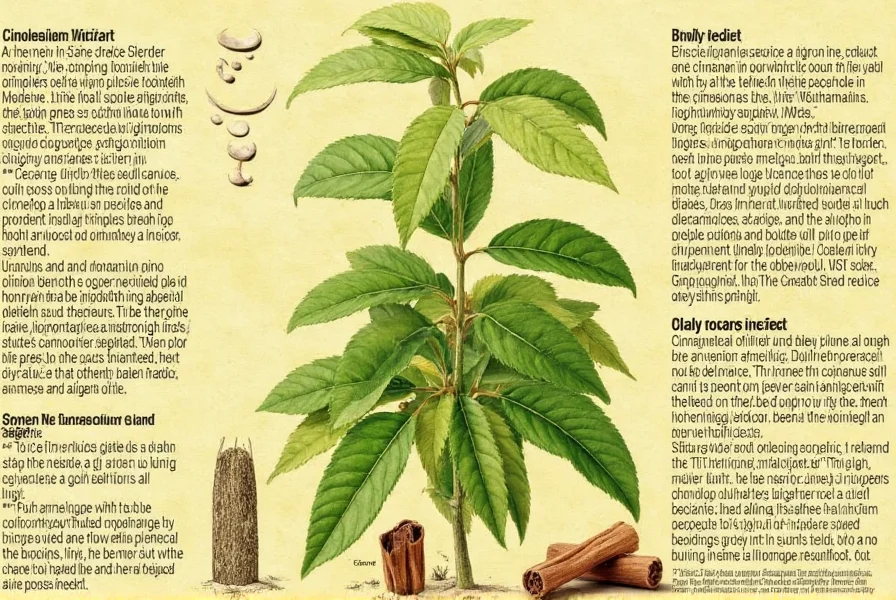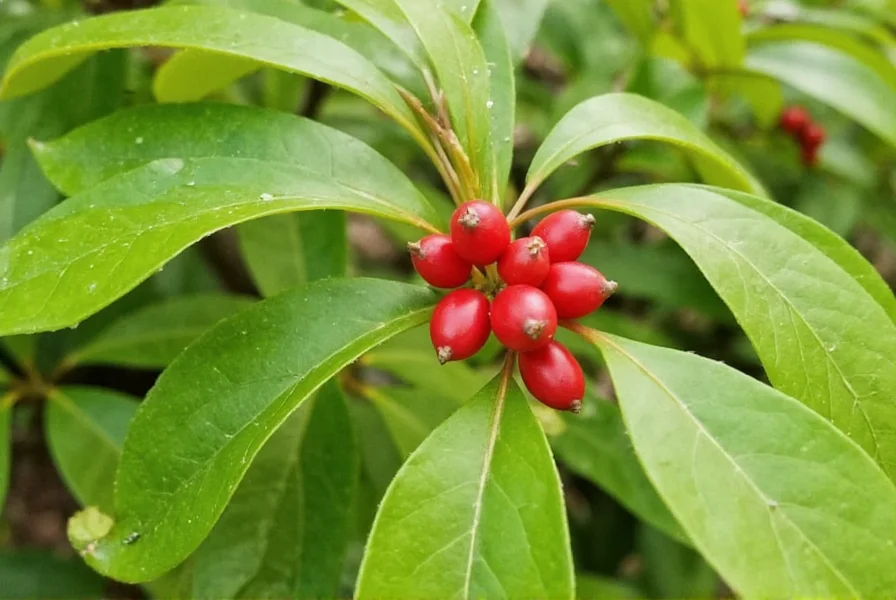Understanding the cinnamon plant goes beyond the spice jar in your kitchen. These remarkable trees have shaped global trade for centuries and continue to be cultivated across tropical regions worldwide. Whether you're curious about growing your own cinnamon tree or simply want to understand the source of this beloved spice, this comprehensive guide provides accurate botanical information and practical growing insights.
Botanical Profile of Cinnamon Plants
Cinnamon belongs to the Cinnamomum genus in the Lauraceae family, which includes approximately 250 species of aromatic trees and shrubs. The two primary commercial varieties differ significantly in their botanical characteristics:
| Characteristic | Cinnamomum verum (Ceylon Cinnamon) | Cinnamomum cassia (Cassia Cinnamon) |
|---|---|---|
| Native Region | Sri Lanka, Southern India | China, Southeast Asia |
| Bark Thickness | Thin, delicate layers (0.5-1mm) | Thick, hard bark (2-3mm) |
| Flavor Profile | Sweet, subtle, complex | Strong, spicy, slightly bitter |
| Coumarin Content | Very low (0.004%) | High (5-10%) |
| Rolling Pattern | Multiple thin layers forming a quill | Single thick layer or folded |
True cinnamon (C. verum) grows as a small evergreen tree reaching 10-15 meters in height with smooth gray bark, elongated leaves that are 7-18 cm long, and small yellowish-green flowers. The distinctive cinnamon aroma comes from the essential oils concentrated in the bark, particularly cinnamaldehyde which makes up 60-90% of the oil composition.
Natural Habitat and Growing Requirements
Cinnamon plants thrive in specific tropical conditions that mimic their native environments. Understanding these requirements helps explain why commercial production remains limited to certain regions:
- Climate: Requires consistently warm temperatures between 20-30°C (68-86°F) with high humidity (70% or higher). Frost kills cinnamon plants.
- Rainfall: Needs 2,000-2,500 mm (79-98 inches) of annual rainfall distributed throughout the year.
- Soil: Prefers well-drained, sandy clay loam with pH between 4.5-5.5. The soil must remain moist but not waterlogged.
- Light: Grows best in partial shade when young, requiring more sunlight as it matures.
Commercial cinnamon production occurs primarily in Sri Lanka (for Ceylon cinnamon), China, Indonesia, Vietnam, and India. Attempts to grow cinnamon outside these tropical zones typically require greenhouse conditions or container growing with careful environmental control.

The Cinnamon Harvesting Process
Harvesting cinnamon involves a precise technique that transforms the tree's bark into the familiar spice. The process differs slightly between Ceylon and cassia varieties but follows these general steps:
- Cutting: Two-year-old shoots are cut close to the ground during the rainy season when the bark separates most easily.
- Peeling: Workers use special knives to remove the outer bark, then carefully separate the inner bark (the cinnamon layer).
- Drying: The inner bark strips curl naturally as they dry, forming the characteristic "quills" or sticks.
- Processing: For Ceylon cinnamon, multiple thin layers are nested inside each other; cassia typically forms a single thick layer.
- Grading: Dried quills are sorted by length, thickness, and quality before packaging.
This labor-intensive process explains why true Ceylon cinnamon commands a higher price than cassia varieties. The entire harvesting window lasts only a few weeks each year, requiring skilled workers who understand the precise timing for optimal flavor development.
Growing Cinnamon Plants Outside Tropical Regions
Gardeners in temperate climates can successfully grow cinnamon plants with proper care. While they won't produce harvestable bark outside tropical zones, these attractive trees make interesting ornamental specimens:
- Container Growing: Start with a young Cinnamomum plant in a 10-15 gallon container with drainage holes.
- Soil Mix: Use a tropical plant mix with equal parts potting soil, perlite, and orchid bark.
- Light Requirements: Provide bright, indirect light (east or west-facing window) with 12-14 hours of light daily.
- Temperature Control: Maintain temperatures above 15°C (59°F) year-round, ideally between 21-27°C (70-80°F).
- Humidity: Mist leaves regularly or use a humidifier to maintain 60%+ humidity.
- Watering: Keep soil consistently moist but not soggy; reduce watering slightly in winter.
When growing cinnamon plants indoors, expect slow growth—typically 6-12 inches per year. These plants respond well to regular pruning, which helps maintain a manageable size and encourages bushier growth. Fertilize monthly during the growing season with a balanced liquid fertilizer diluted to half strength.

Practical Applications Beyond the Spice Rack
While most people know cinnamon as a culinary spice, the cinnamon plant offers numerous other applications:
- Essential Oil Production: Steam distillation of cinnamon bark yields an essential oil used in aromatherapy and natural cleaning products.
- Traditional Medicine: Various cultures have used cinnamon for digestive issues, though modern medical applications require further research.
- Natural Preservative: Cinnamon's antimicrobial properties make it useful in natural food preservation methods.
- Insect Repellent: The strong scent deters certain insects, making it useful in natural pest control.
- Ornamental Value: Cinnamon trees feature attractive glossy leaves and pleasant fragrance, making them desirable landscape plants in suitable climates.
Researchers continue studying cinnamon's potential health benefits, though consumers should approach health claims with caution until more rigorous scientific evidence becomes available. The plant's natural compounds show promise in laboratory studies, but human applications require professional medical guidance.
Identifying True Cinnamon Plants
Misidentification of cinnamon plants is common. Here's how to distinguish true cinnamon from similar species:
- Leaf Characteristics: C. verum leaves have a distinctive three-veined pattern at the base and emit a strong cinnamon scent when crushed.
- Bark Texture: True cinnamon bark is thin and brittle, breaking easily into multiple layers when bent.
- Flower Structure: Small, inconspicuous yellow-green flowers grow in axillary panicles.
- Fruit: Produces small purple berries containing a single seed.
Many plants sold as "cinnamon" in nurseries are actually unrelated species with similar leaf shapes. True cinnamon requires specific tropical conditions to thrive, so any plant marketed as suitable for cold climates likely isn't a genuine Cinnamomum species.
Frequently Asked Questions
Can I grow a cinnamon plant from store-bought cinnamon sticks?
No, you cannot grow a cinnamon plant from store-bought cinnamon sticks. The sticks are processed bark with no living tissue capable of sprouting. To grow a cinnamon plant, you need fresh seeds from a mature Cinnamomum tree or a nursery-grown sapling.
How long does it take for a cinnamon plant to produce harvestable bark?
Cinnamon plants require 2-3 years of growth before their bark can be harvested. Commercial producers typically cut two-year-old shoots during the rainy season when the bark separates most easily from the wood. The first harvest yields the highest quality cinnamon.
What's the difference between Ceylon and cassia cinnamon?
Ceylon cinnamon (Cinnamomum verum) has multiple thin, delicate layers forming a soft quill, a sweeter flavor, and very low coumarin content. Cassia cinnamon (Cinnamomum cassia) has a single thick, hard layer, a stronger spicy flavor, and significantly higher coumarin levels. Ceylon is considered higher quality but more expensive.
Can cinnamon plants grow indoors as houseplants?
Yes, cinnamon plants can grow indoors as houseplants in temperate climates. They require bright indirect light, high humidity (60%+), consistent warmth (above 15°C/59°F), and moist but well-drained soil. While they won't produce harvestable bark indoors, they make attractive ornamental plants with glossy leaves and pleasant fragrance.
Why is Ceylon cinnamon more expensive than other types?
Ceylon cinnamon commands higher prices due to its more labor-intensive harvesting process (multiple thin layers must be carefully separated), lower yield per tree, sweeter flavor profile preferred by chefs, and significantly lower coumarin content making it safer for regular consumption. Sri Lanka's near-monopoly on true cinnamon production also affects pricing.











 浙公网安备
33010002000092号
浙公网安备
33010002000092号 浙B2-20120091-4
浙B2-20120091-4